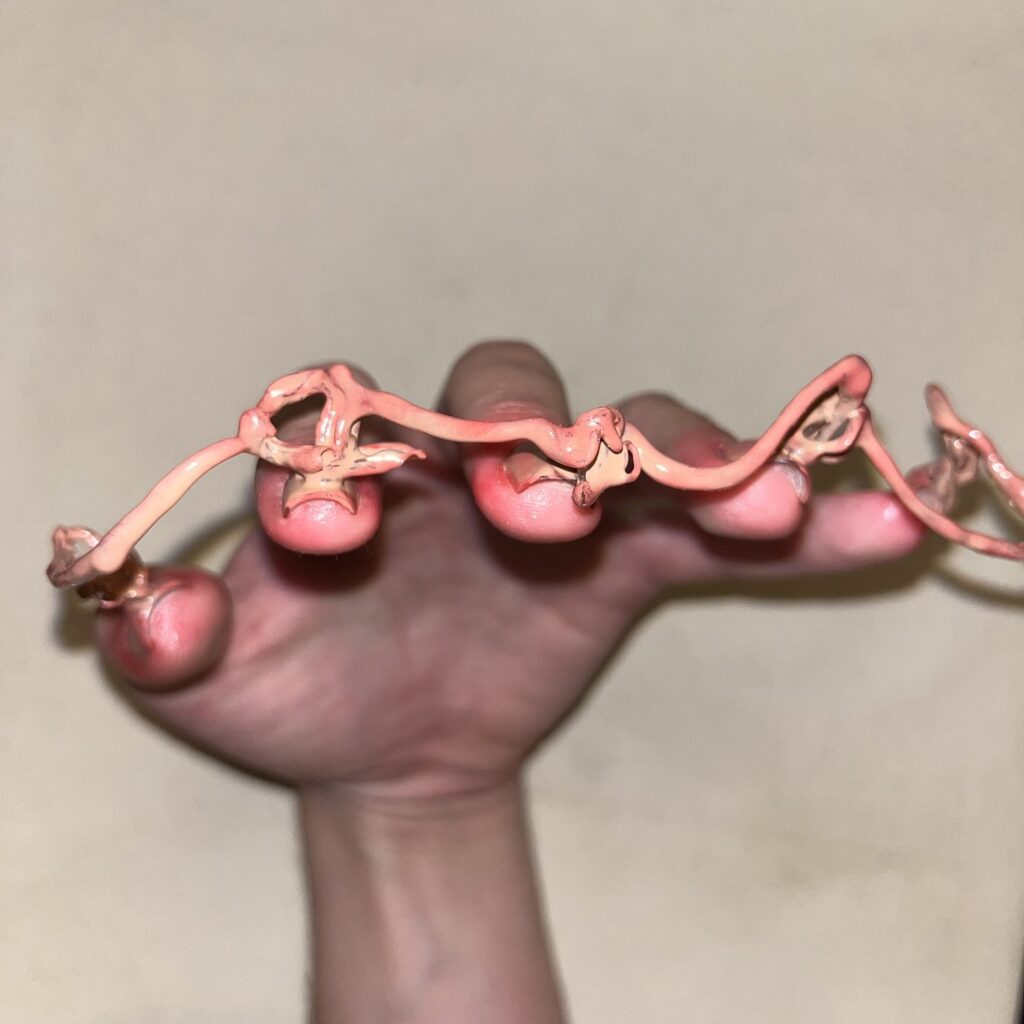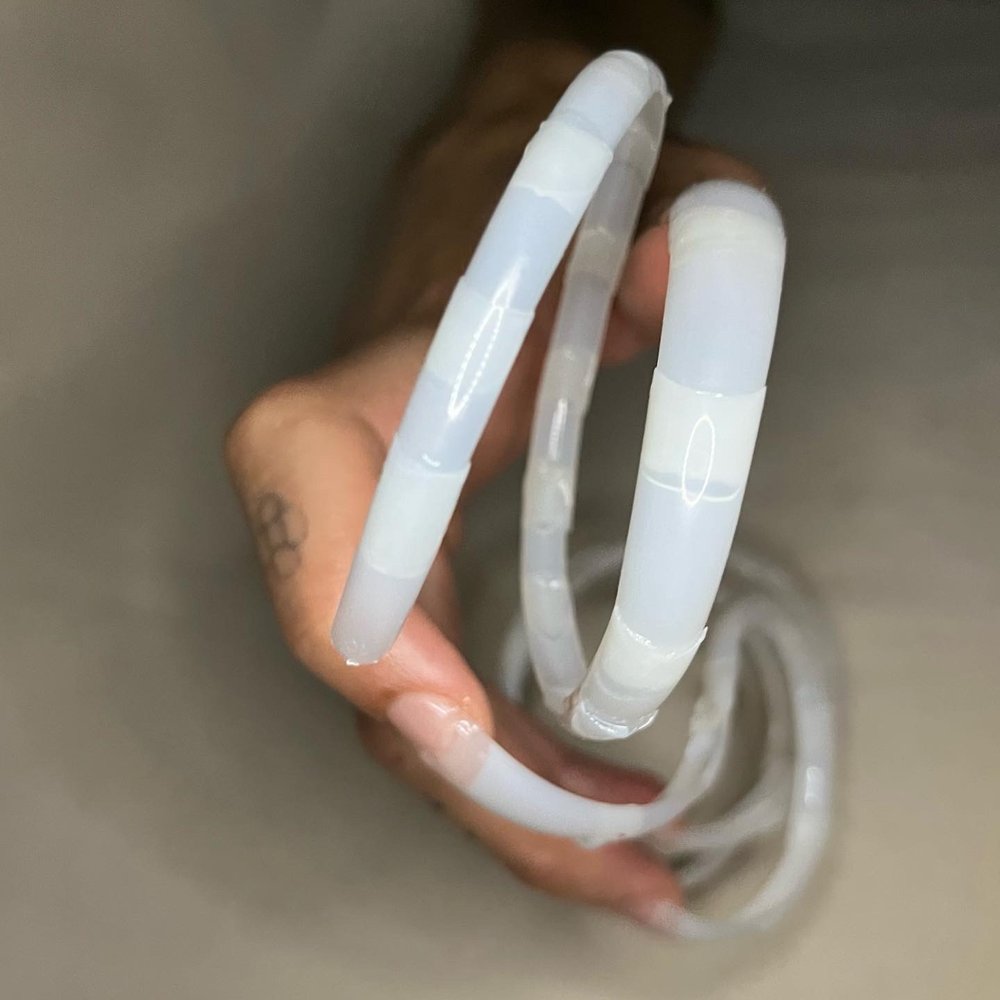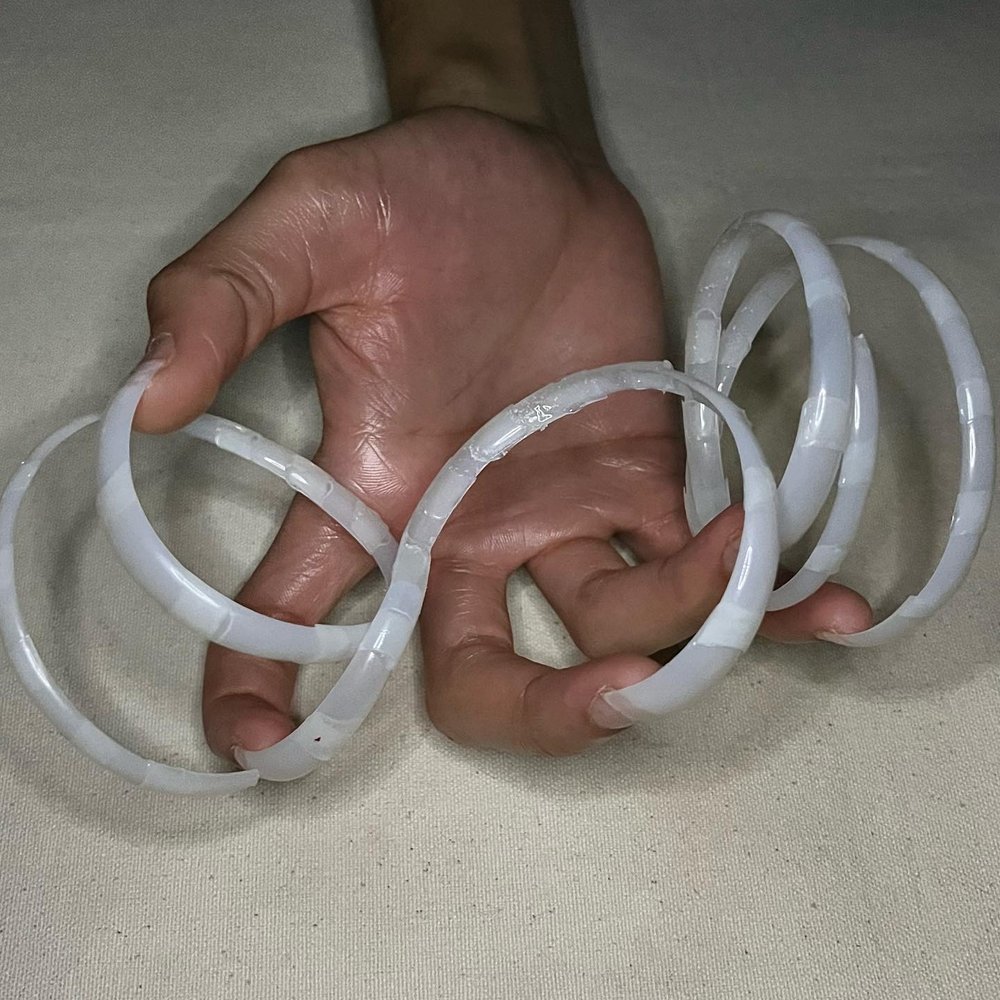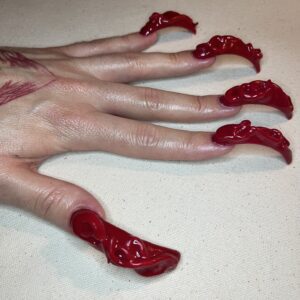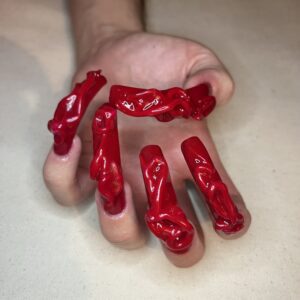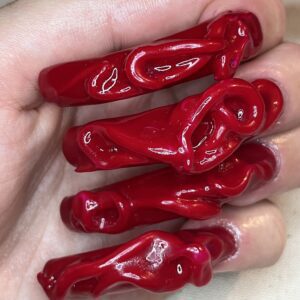DURING THE QUARANTINE phase of the pandemic, New York City was deathly quiet. In this silence, I began to discover my own genderqueerness, which manifested by way of playing with clothing, adjusting the height of my heels, and picking up nail art. Two years later, I’m still playing around with nail art, but the experiment has blossomed into a research-based art praxis connecting the history of nail art to queer theory and phenomenology. I’ve leaned into Sara Ahmed’s theories in Queer Phenomenology: Orientations, Objects, Others (Duke University Press, 2006) to explore how bodies are “oriented” in space and time toward certain objects and subjects and away from others, and how long nails disrupt these orientations.
I create intentionally nonfunctional nail sculptures that queer the body through hyperextension, using materials such as resin-based gels, gel polish, plastic nail forms, Polygel, organic matter, and found objects. This queered body takes up physical space in a way that is antithetical to the linear, cisgender, heteronormative, white body. Each painstakingly applied sculpture (it can take as long as eight hours per nail) is an opportunity to explore the queered body in its radical exclusion, as a body impossible to assimilate—as abject.
Abjection, a philosophy coined by Julia Kristeva in her book Powers of Horror (Columbia University Press, 1982), is the experience of repulsion provoked when the boundary between self and other is traumatically broken down. Confronting a corpse, for instance, forcibly reminds you that you, too, will one day become a body without a self. You try to suppress this rotting carcass of thought welling up in you. You chew and swallow, holding your breath, only to vomit up something exponentially more horrific. This disturbance to the identity is abjection. One wants to refuse the abject, but instead, one is engulfed by it. The momentary experience of abjection is routine. However, within capitalism, the Black, femme, trans, queer, Indigenous, fat, disabled, and/or incarcerated body is rendered abject in its existence. The existence of so-called “others” disturbs the identity of the linear subject (cis white men, classically).
My work reveals how these queered bodies are rendered abject—as both experiencer and phenomenon. Rather than refusing the abject, the nails urge the viewer to lean into their discomfort and view the abject body as beautiful, rather than disruptive or rupturing. To accept the abject—to decide to surround oneself with the abject—is to fall in love with the beauty and horror of nonlinear life. It may be that my work is palatable (or legible) only to the queered audience, those who have also been rendered abject in the world, but that’s who my work is for anyway. Wearing nail art is empowering: You allow your body to take up more space. It’s queer: You move away from constraint and face an existence that is dangerous yet sublime. It’s political: You reclaim your autonomy and become impossible to assimilate.
